If your lawn has been damaged due to neglect, extreme weather or other environmental factors, it can be a difficult and time-consuming job to fix. If you have St. Augustine grass in your yard, the task is even more daunting as this type of grass needs regular upkeep if you want your lawn to look its best. However, with the proper knowledge and understanding on how to repair St Augustine Grass, you will find that repairing your lawn doesn’t need to be a hassle anymore! In this article we cover everything from soil testing for nutrient deficiencies, repairing bare patches and weed control to fertilizing schedules – giving readers all the information they need to get their beautiful green turf back into shape once again.
Table of Contents
What Is St. Augustine Grass?
St. Augustine grass is a common warm-season turfgrass that is extensively cultivated and one of the favored lawn grass types in the southern region of the United States. It is coarse-textured, grows relatively fast, and has good wear resistance. St. Augustine grass also tolerates shade better than other warm-season grasses such as Bermuda and Zoysia, but it does not tolerate cold temperatures well. Its thick blades help keep weeds at bay by creating dense mats that make it difficult for weeds to take root.
If you have St Augustine grass on your property, there are several steps you should take in order to ensure its health and longevity, including repairing damaged patches as soon as possible. Read on to learn more about how to repair St. Augustine grass. [1]
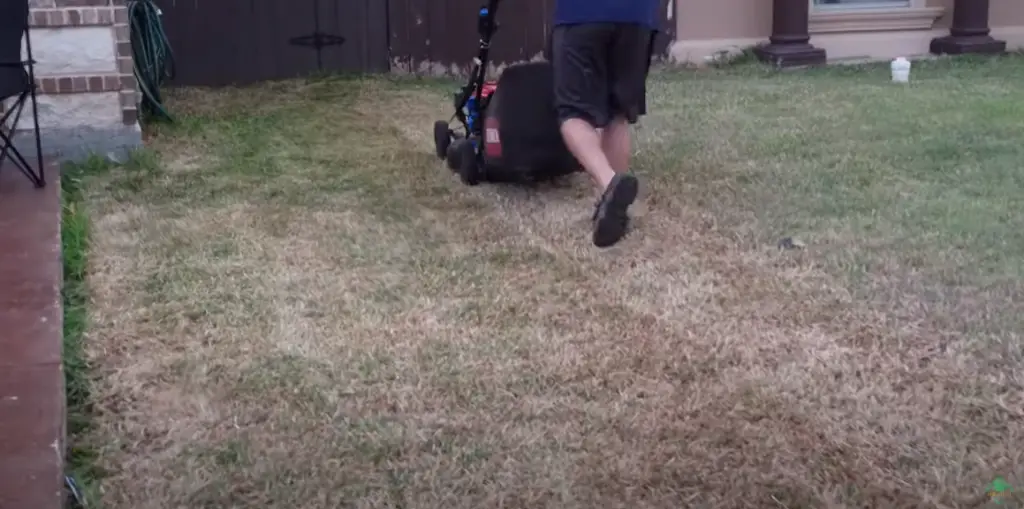
Reasons Why St. Augustine Grass Dies
St. Augustine grass is a popular lawn grass in warm, humid climates because it tolerates heat and shade well. However, it can become damaged or die for several reasons including pests, disease, and lack of water.
Pests: Chinch bugs, armyworms, and sod webworms are examples of insects that can harm or even destroy St. Augustine grass. Chinch bugs are tiny bugs that use their mouthparts to pierce and suck the juices out of plants, which results in damaged patches on the turf. Armyworms are caterpillars that chew into the blades of the grass while sod webworms cause a light browning of the turfgrass and may leave behind piles of sawdust-like material which is their excrement.
Disease: Some diseases that can affect St. Augustine grass are gray leaf spot, brown patch, and take-all root rot. One type of fungal disease called gray leaf spot affects turfgrass by creating circular patches of yellow or brown spots, which are accompanied by small black dots on the leaves. Brown patch is another fungal disease which creates large, irregularly shaped patches of yellowing and dead grass. Take-all root rot can also cause thinning or dieback in the turf due to roots being killed by a fungus.
Water Stress: The most common cause of stress for St. Augustine grass is lack of water which can lead to dryness and wilting of the plant tissues, resulting in stunted growth and possibly death. St. Augustine grass needs at least 1 inch of water per week, either through rainfall or supplemental irrigation to stay healthy and vigorous.
By understanding the causes of St. Augustine Grass dying, homeowners can take steps to prevent damage and keep their turfgrass looking beautiful for years to come. Proper maintenance such as applying fertilizer and pest control products, watering adequately, aerating regularly and mowing at the proper height will all help ensure a healthy lawn. In addition, monitoring for signs of disease or insect damage can stop any problems before they spread too far into the turf. With these measures in place, your St. Augustine grass will remain lush and vibrant throughout the year! [2]
Can Dead St Augustine Grass Come Back?
St Augustine grass is a warm-season turfgrass that is commonly found in the southeastern United States. It has a deep root system and will remain green even through periods of drought. Unfortunately, St Augustine grass can become damaged by extreme temperatures, overuse, pest infestations, and disease. If your lawn has suffered damage, you may be wondering if dead St Augustine grass can come back.
The good news is that with proper care and effort, it’s possible to revive dead or dying St Augustine grass.
Once you’ve identified the source of the damage, it’s time to take action to revive your lawn. Depending on the cause of death, this may involve removing weeds, adjusting watering techniques, applying a fungicide treatment, or introducing beneficial nematodes to control pests.
Other steps may include mowing at the proper height, removing thatch buildup in dead areas of turfgrass, overseeding with fresh St Augustine seed and fertilizing regularly with a specialized fertilizer blend for warm-season grasses. [3]
How to Revive St. Augustine Grass?
Give It Space
Before you start to repair your lawn, give it space. St Augustine grass needs plenty of room to grow, so clear away anything that might be taking up valuable real estate. This includes weeds, debris, and any plants or trees that are competing for resources.
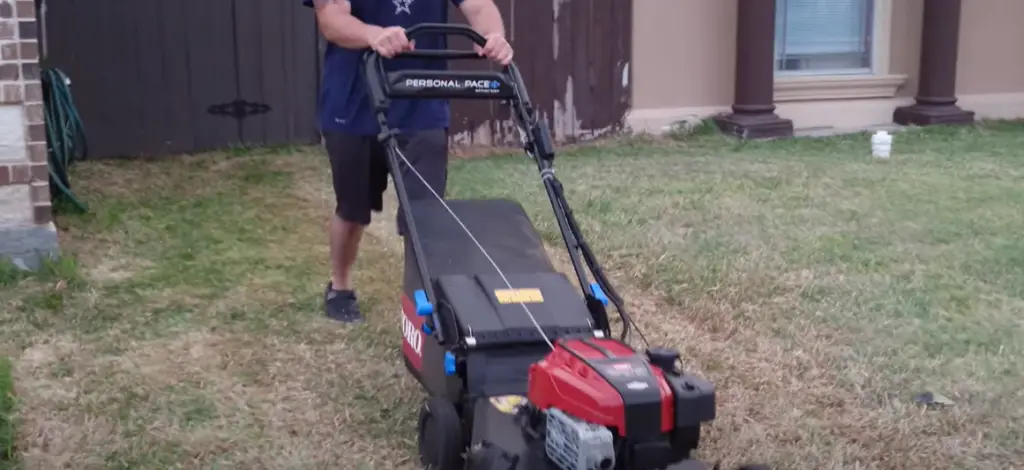
Aerate It
Compacted soil can restrict root growth and make it difficult for water and nutrients to reach your grass. To loosen the soil, use an aerator tool to puncture holes in the ground every few inches. The holes will help air flow into the roots of your grass and make it easier for new growth to take hold.
Fertilize Regularly
Fertilizing regularly is one of the most important steps when it comes to reviving St Augustine grass. Choose a fertilizer that is specifically designed for St Augustine grass and spread it evenly across your lawn. Follow the instructions on the package to determine how often you should fertilize and how much fertilizer to use.
Mow Properly
When mowing, make sure you’re not cutting too short or too long. The blades of your mower should just barely be skimming the tips of your grass blades so that only about one-third is removed each time you mow. This will help keep weeds from taking hold and allow enough sunlight to reach the ground beneath your grass.
Water Appropriately
Another important step in reviving St Augustine grass is proper watering techniques. Avoid over-watering, as this can drown your grass and cause disease. Instead, water lightly but frequently to keep the ground moist without drenching it. The best time to water is early in the morning, as this gives the sun time to dry off any excess water before nightfall.
Dethatch Lawn
Thatch is a layer of dead grass and debris that can accumulate over time in lawns. If you have an excessive buildup, it can impede the growth of your St Augustine grass. To combat this, use a dethatching tool to remove the layer and allow your grass to flourish.
Seed or Sod
If your lawn has severe damage or bare spots, consider seeding or sodding to fill in the gaps. Seeding is a more affordable option, but it may take longer for your lawn to fully recover than if you opt for sodding. [4]
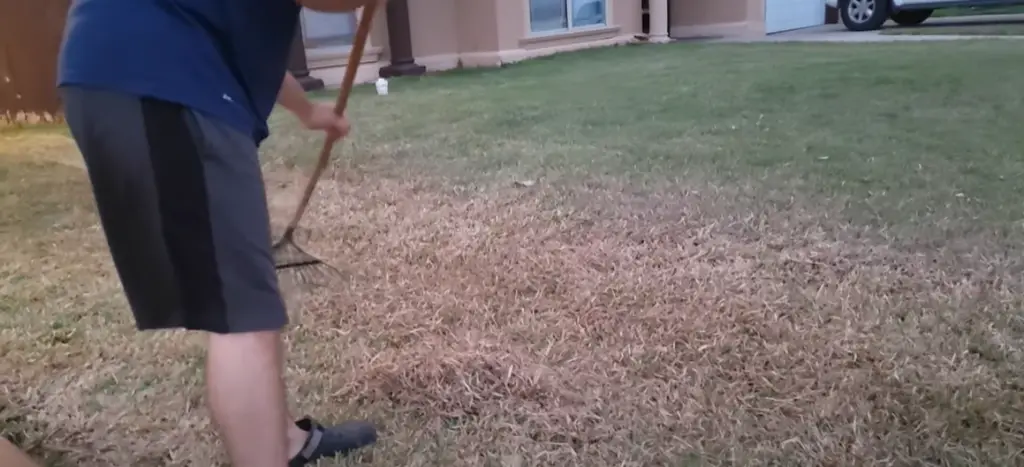
How to Repair Disease Damage to St Augustine?
Verify Water Application
The first step to repairing St Augustine Grass damaged by disease is to make sure you are properly watering the lawn. Generally, St Augustinegrass prefers about 1 inch of water per week, either from rainfall or supplemental irrigation. Make sure you are not overwatering your lawn as this could lead to fungal issues or root rot.
Fungicides and Insecticides
If the cause of your St Augustine’s damage was an insect or fungus issue, then a fungicide or insecticide may be necessary. Be sure to carefully read the label for application instructions and safety information before use. Also, apply these products in cool weather for best results and avoid using them if it’s too hot outside as they can burn the grass leaves.
Do Not Over-apply Fertilizer
In addition to watering and controlling pests, monitoring your fertilizer applications can help prevent St Augustinegrass from becoming diseased. Never apply more than suggested on the label and always spread it evenly across your lawn for optimal results. [5]
Re-seeding
If the damage is severe, you may need to re-seed the affected area with new grass seed. Be sure to remove any dead or dying grass before laying down fresh seed, as this will ensure that the healthy plants can get adequate sunlight, water and nutrients. Follow up by adding a layer of mulch or compost to keep moisture locked in and promote root growth.

How to Repair Lawn Damage from Pests and Insects?
If your St. Augustine grass has been damaged by pests and insects, it is important to repair the affected areas as soon as possible in order to prevent further damage from occurring. The following tips will help you restore your lawn to its former glory:
- Identify the Pest or Insect – Before attempting any repairs, it is important to identify what type of pest or insect has caused the damage so that you can develop an appropriate treatment plan. Common culprits for damaging St. Augustine grass include chinch bugs, mole crickets, and sod webworms.
- Treat With an Appropriate Insecticide – Once you have identified the pest or insect responsible for causing the damage, apply a treatment of insecticide formulated to target that specific pest. Be sure to read the manufacturer’s instructions for proper application and safety precautions.
- Reseed Affected Areas – After treating with an insecticide, reseed any areas of your lawn that have been damaged by pests or insects. Plant grass seed in two directions (north-south and east-west) to ensure even coverage. Apply a thin layer of mulch to retain moisture and prevent birds from eating the newly planted seeds.
- Maintain Proper Watering Schedule – Once your new grass has begun to grow, it is important to maintain a regular watering schedule in order for it to remain healthy and strong. St Augustine grass should be watered deeply every three days during dry periods, or during extended hot weather.
Following these steps will help you restore your St Augustine grass and prevent further damage from occurring in the future. If you have any questions, be sure to contact a lawn care professional for help. With proper maintenance and care, your lawn should remain beautiful and healthy for years to come. [6]
Tips on Growing St. Augustine Grass
Growing St. Augustine grass is a great way to cool off your lawn and bring it to life with a lush, green look. The good news is that it’s not difficult to grow this type of grass in most climates. Here are some tips for growing this popular turfgrass:
- Choose the right soil. In order to successfully grow St. Augustine grass, you need to make sure the soil has adequate drainage and fertility – an ideal pH balance of between 5.5 and 7 should be achieved before planting. You may also want to add organic matter such as compost or peat moss for better water retention.
- Plant grass plugs or sod pieces carefully during optimum weather conditions (springs/falls). Make sure to remove any existing weeds before planting.
- Water regularly but not too often, as St. Augustine grass can be susceptible to root rot if overwatered. An inch of water per week should be sufficient during the growing season.
- Mow regularly at 3-4 inches in height to keep the grass healthy and strong – longer mowing heights will help protect it from drought and weed infestations.
- Fertilize your lawn several times a year depending on growth needs, following manufacturer’s instructions carefully for best results.
By taking proper care of your St Augustine grass, you’ll have a beautiful and healthy lawn that you can enjoy for many years to come! [7]
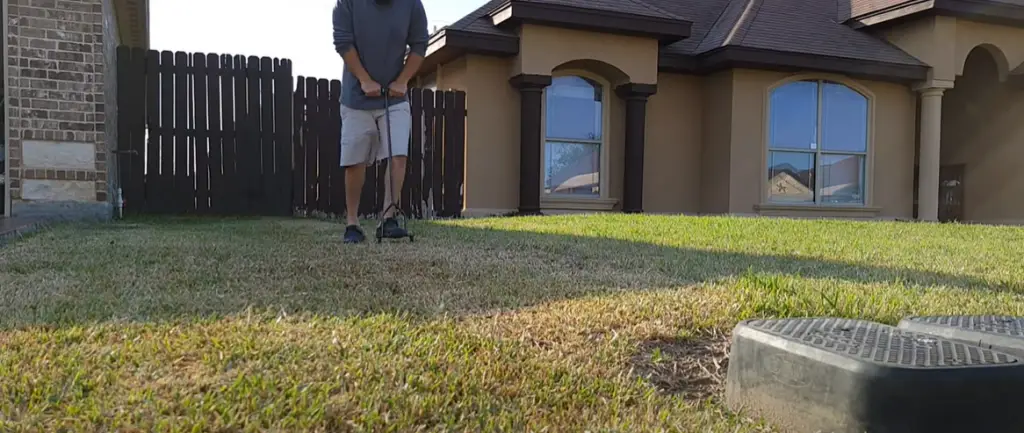
FAQ
How do you fix damaged St. Augustine grass?
The best way to repair damaged St. Augustine grass is to use a process called “overseeding”. This involves applying a mixture of top-quality grass seed and fertilizer over the affected area, which will help fill in any bare spots and patch up existing damage. You should also water the lawn lightly every day until you see the new grass beginning to grow. Additionally, mowing your lawn regularly can encourage healthy growth and help promote thick, lush coverage. For more severe cases of damage, professional sod or sprigs may need to be applied as well. It is important that you follow proper procedures for overseeding and fertilizing your lawn in order to achieve optimal results.
Will St. Augustine grass recover from brown patch?
Yes, St. Augustine grass can recover from brown patch if the root system is still intact and healthy. To combat brown patch, you should first water your lawn deeply but infrequently to promote deep root growth. Then, apply a fungicide to eliminate any remaining fungus in the soil. Finally, fertilize and overseed the affected areas to help fill in any bare spots and encourage new growth. With proper care and maintenance, St. Augustine grass will eventually bounce back from brown patch-related damage.
What is the best fertilizer for St. Augustine grass?
The best fertilizer for St. Augustine grass depends on a variety of factors such as climate, soil type, nutrient levels, etc. Generally speaking however, it’s recommended that you use a balanced fertilizer with a 3-1-2 ratio (N-P-K) to provide your grass with all the essential nutrients it needs. Additionally, be sure to follow the instructions on the product label regarding application rate and frequency for optimal results.
How often should I water St. Augustine grass?
St. Augustine grass typically requires 1 – 1.5 inches of water per week in order to stay healthy and green. If your lawn is established, it is best to water deeply but infrequently as this encourages strong root growth and helps reduce disease. During dry periods or times of extended drought, you may need to increase watering frequency slightly in order for your lawn to remain healthy and vibrant.
What temperatures can St. Augustine grass withstand?
St. Augustine grass is relatively heat-tolerant and can withstand temperatures up to 95 degrees Fahrenheit without wilting or showing signs of stress. However, during extended periods of extreme heat, you may need to provide your lawn with extra water in order to keep it looking its best. Additionally, St. Augustine grass does not do well in cold climates and should be planted in areas where temperatures will remain consistently above 25 degrees Fahrenheit throughout the year.
Useful Video: 5 Steps To Recover St. Augustine Grass
Conclusion
In conclusion, repairing St. Augustine grass is a task that requires vigilance and patience. With the right preparation, maintenance practices, and care throughout the season, you can ensure your lawn remains healthy and lush for years to come. Start by assessing your soil quality, choosing the appropriate seed or sod variety for your region, testing and amending pH levels as necessary, mowing correctly, watering adequately but not excessively, controlling pests and weeds organically whenever possible, aerating annually to improve soil structure, fertilizing regularly with organic products as needed – these steps will go a long way in helping repair any damage to your St. Augustine grass lawn. Finally, don’t forget to enjoy the results of your hard work! You’ll have a beautiful green lawn that you can be proud of. With the right knowledge and care, you have everything you need to repair St. Augustine grass and keep it in great condition all year round.
Good luck!
References:
- https://www.thisoldhouse.com/lawns/reviews/how-to-revive-st-augustine-grass
- https://www.crabgrasslawn.com/revive-st-augustine-grass/
- https://www.lawnandpetal.com/how-to-repair-st-augustine-grass/
- https://www.angi.com/articles/revive-dead-st-augustine-grass.htm
- https://www.truevalue.com/diy-projects/post/patio-and-garden/patch-and-repair-bare-spots-in-your-lawn
- https://themasterslawncare.com/blog/vlog-how-prevent-brown-patch-fungus-your-gainesville-lawn
- https://lawnlove.com/blog/most-common-st-augustine-grass-diseases/

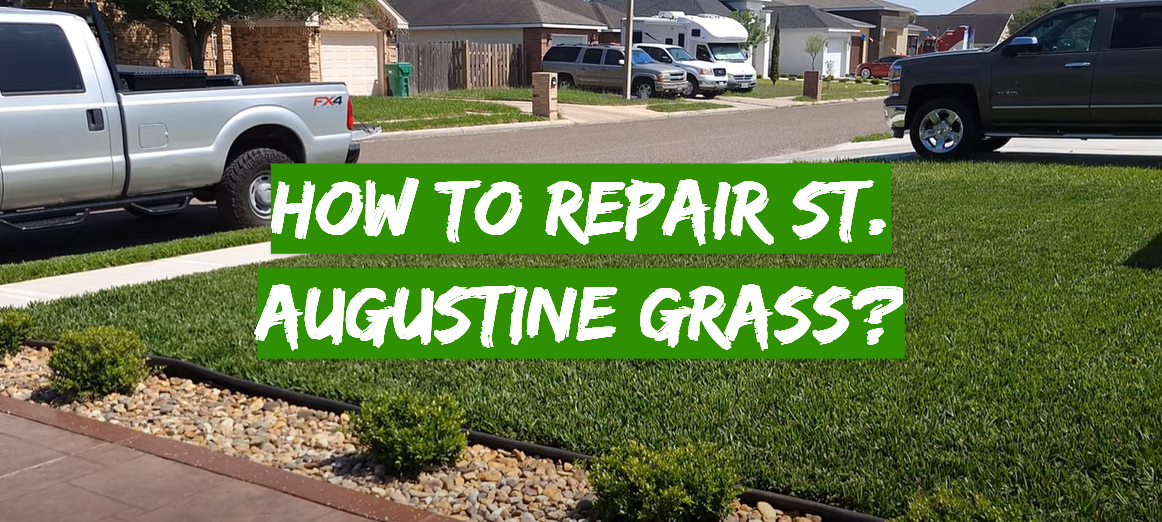


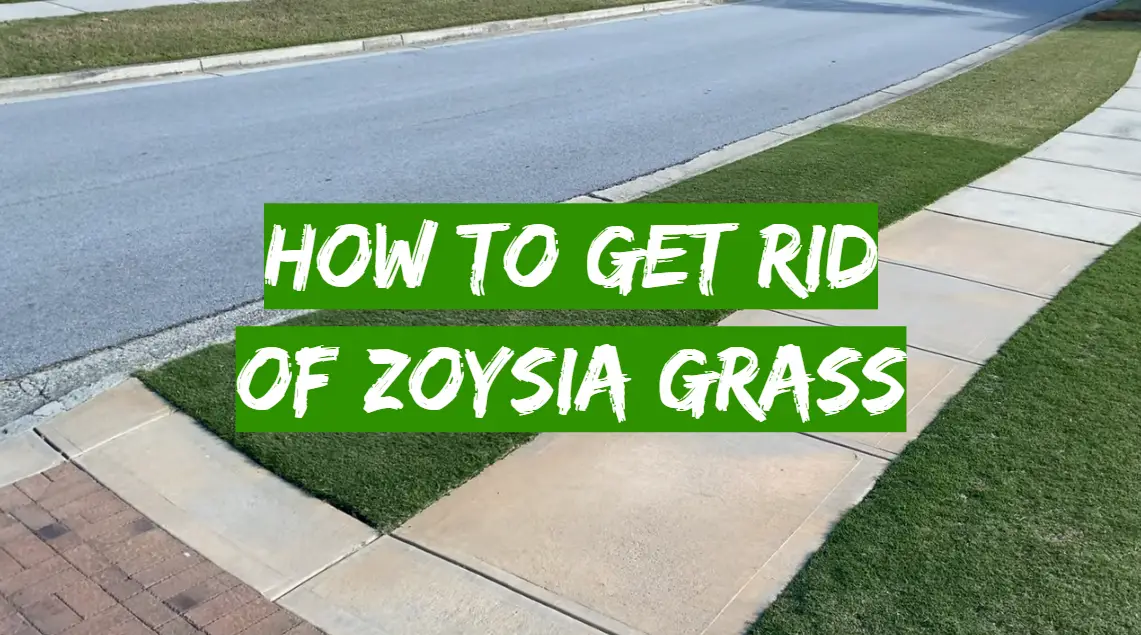
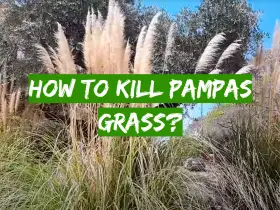

Leave a Reply
View Comments